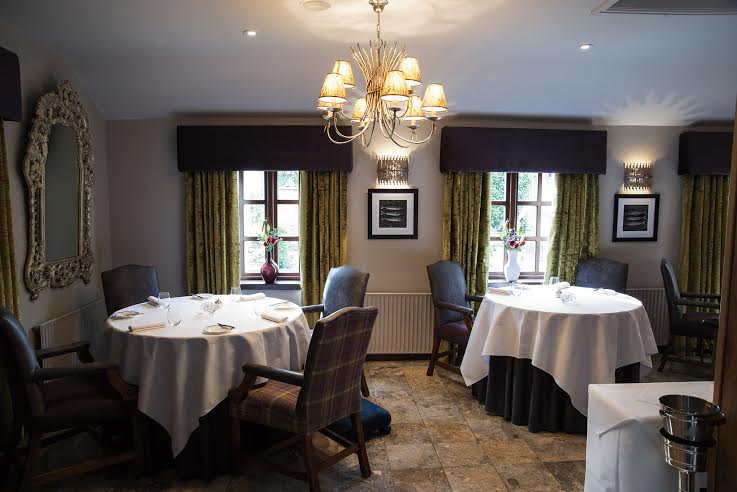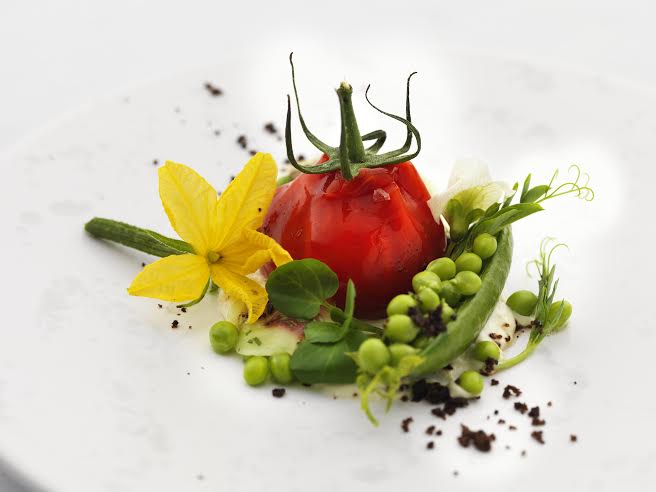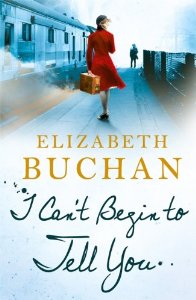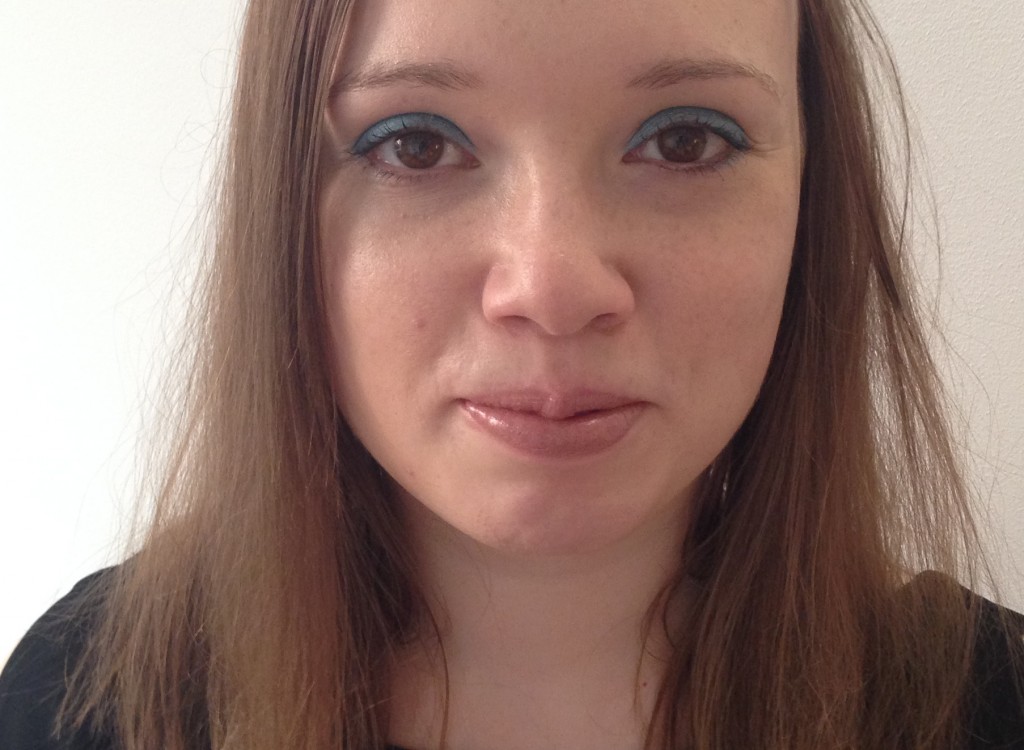He was a man with a heart that never hardens, and a temper that never tires, and a touch that never hurts. He was the kingfish of literature. Like Voltaire, he was the original enlightenment writer of Indian milieu.




To lose a lodestar is a beautiful accident in the fleeting celebration of skyfall. But to lose a guiding spirit is a tragedy for one and all. For me, the departure of a classic chaperone in Rajendra Yadav is as good as a ship steaming out of harbor. Then when was the ship built for the harbor even when it safe there. We all are destined to sail in the sunset one way or the other but we all are not as destined to light the lamp of thoughts, ideas, logic and reason in our twilight. Rajendra Yadav might have become antagonist for his detractors who saw in him a monolithic fountain who sired a great tribe of writers and thinkers from the margins of society, thereby, demolishing iron curtain of feudalism in popular culture and literature. For me and tens of thousands the ‘Tin Godesque’ protagonist was the fulcrum of life around whom revolved the wagon wheel of secular and subaltern discourse. Before he kissed the classic arrows of his last nicotine breath, he had ploughed the lonely furrow for 28 summers and turned Munshi Premchand’s vehicle of new idea and socialist discourse, Hans, into a heritage literary magazine. A magazine that could easily compete with the class and chutzpah and colour of Western literary bible, such as Granta of Britain and New Yorker of the United States!
Almost twenty fours ahead of his fatal fall to the respiratory attack, precipitated by a heightening sense of anxiety over the past couple of months, I have had a brief talk with him over telephone from Mumbai. As always, there was the same liveliest effusion of wit and humour in his baritone booming into my ear. Strain of the same naughty chuckle was tugging at the ear-lobe as if the lion was roaring. Effervescence and flamboyance in his persona was dripping through his confident tone and tenor. There was more expectation and little exhaustion. As if he was loitering in his lustful pursuits of free life!
I informed him about posting of a new picture in sepia tone of him on Facebook, which shows his tousled hair and shining head in bouts of contemplation while columns of smoke waft like charcoal drops of cloud around his stellar back revolving chair and square deodar wood table pregnant with piles of story-spread, perched firmly in the Spartan sanctum sanctorum of Hans office in Dariya Ganj on the edge of walled city and Lutyen’s Delhi.
Rajendra Yadav in his 85th season of spring and autumn was not an old man. Nobody could claim that he was the mumbling old man, saddled by demon. For you and me, us and them, literary giant who pioneered the new wave literary movement in early decades of India’s independence was a pathfinder. He was full of optimism and hope and had special penchant for sarcasm and wit. If at all he was saddled by some poisoned chalice of demon that was zest for spreading the sparks of his enlightened secular fundamentalism through his most-sought after editorial commentary of modern India. If at all he was besieged by the demon of any kind, the storyteller was in the siege of telling another mesmerizing tales of smile and tear, ghost and god, hope and fear, love and lust, faith and betrayal, passion and fashion.
It was 3 o’clock in the misty Mumbai morning when I jerked out of the bed to read a Facebook message from a literary lensman Bharat Tiway. A groggy look at few words declaring the unthinkable, ‘sir nahi rahe (sir has departed for his heavenly abode) left me disbelieving for a moment or so before I could rush out after a hasty shower to board the first available flight to New Delhi. But the tunnel of my eyes bathed me in river of tearful sorrow. Needless to say there was a sudden surge of emptiness within. Even after a fortnight I am not able to reconcile to the truth that the ‘light’ has went out of my life.
Nevertheless, I feel at ease when some sacred sentiments of Rajendra Yadav echo in my heart. Here was the giant, who despised mourning and sorrow. He would often say, “Anxiety is the cancer of heart. Sorrowful state is one thing and to celebrate sorrow with more sorrow is cowardice and stupidity. I want people to celebrate my departure with smile, not tears. A death is an opportunity just as life is. Opportunity is not mourned.”
He led such a life that when he died a vast crowd of people worldwide, from President of India Pranab Mukherjee to popular peace campaigner Tommy Schmitz in Ohio of America, readers and admirers, did mourn him and while he was alive a vast sea of humanity, from jungle of Bastar to fertile fields of Punjab and Hindi heartlands longed for his company.
It was the summer afternoon of 13 May 2000. My maiden rendezvous with Rajendra sahib could take place due to graciousness of filmmaker Anwar Jamal, an avant garde filmmaker of ‘Swaraj’ fame. I was wandering in search of literary and journalistic moorings at the time. All of 23 years of age in the millennium year I was wrestling with quantum of challenges after the controversial ban on my virgin drama, Hitler in Love with Madonna. Much before the play could be mounted on stage, it was dismantled by the Hindu College authorities at the behest of the then BJP-led NDA government because one of the protagonists in the play was modeled with implicit giveaways on the then Union Home Minister and mascot of resurgent and militant Hindutva, L.K. Advani. Lusting solidarity with the secular sentinels of New Delhi, I was face to face with ‘Voltaire’ of modern India’s socio-cultural and political discourse. Sitting across him and separated by mountain of loose story sheets, I could experience the enchantment. The swishing drag of his burning smoke pipe, as he listened to me in rapt attention before breaking into a conversation, was akin to harvesting my imagination.


More than his short stories and contemporary classical novel like Saara Akash, Rajendra Yadav’s philosophical discourse fascinated me. It was equally true for tens of millions others across India. He was a brave heart commentator who had the audacity to bear any kind of consequences for his thoughts and actions. I could recall vividly how unfortunate it was for him to experience a barrage of hate mail and communal onslaught, not to mention the credible threat to his life, for writing, ‘Ravan ke darbar mei Hanuman ek aatankwadi tha jaise ki Angrezo ke darbar mei Bhagat Singh dahshatgard tha (Hanuman was a terrorist in the court of Ravana just like Bhagat Singh was a terrorist in the court of British Raj). The controversy took the literature world by storm, creating dangerous fissures of communal and caste polarization. Then, he was always a polarizing figure.
Vedic custodians of obscurantist mythological fortresses dubbed him as a ‘hate figure’ and continued to ridicule him with barbwires invectives. So much so that his fast friend of many decades and country’s leading literary critic Namwar Singh had the cheeks to growl and frown in public, ‘Hans Kauwa ban gaya hai. (Hans-the swan-has become a crow now). Rain or shine, Rajendra was unafraid in his solidarity with the hapless dreamers of his rainbow society. He would not let literary oligarchy to rest in peace and carried on assault over the sacred scriptures and ivory towers of Brahmanical doctrine.
Like tens of millions across India, I would simply marvel at his iconoclastic, yet mystic illumination. Like a Noam Chomsky of the first world, he was lethal in his attack on caste-ridden Hindu society and didn’t hesitate to ridicule its discriminatory ethos, apartheid against woman, Dalit and Muslim and others while questioning the ‘society of sin’ over rampant hypocrisy, superstition, and evil customs like honour killings, dowry and foeticide.
There was soul of Jean Paul Sartre and Friedrich Nietzsche in him speaking when he needled fellow god-fearing Indians in another enlightening editorial: Don’t we need religion only in adolescence? After passing the adolescence, an adult doesn’t need religion and God. Both man and woman should stop and think do they really need religion and god. Does a woman need religion and god? Why would she need after being the silent sufferer of tyrannical customs, rites and rituals? So, whether a woman is Dalit or Brahman, she must wage a battle for her emancipation.”
However, he would not impose his rational beliefs over others. His wife for thirty five years, noted novelist and story writer Mannu Bhandari, practiced her religion without fear and favour from her husband and at times he reluctantly participated in the rituals too only to keep her in good humour.
In many spheres of his life, he was a liberal, a socialist and a pacifist. But he never underestimated the power of others, old or young, to outsmart him in his own turf. He dared to doubt his own conviction ahead of winning the war of wits against his counterparts. Just as British philosopher Bertrand Russell led the British “revolt against idealism” in the early 20th century and Voltaire enlightened the French with his anti-establishment and anti-Church discourse, Rajendra Yadav led the charge of subaltern voices of resistance against the dominance of upper-caste Brahmanical fortress. As a result of his relentless crusade, quite a great number of thought leaders, including Ajay Nawaria and Sheeba Aslam Fehmi, emerged on the social and cultural firmament of India to hold his baton aloft. Hans and his own world became a nursery for grooming thought and opinion leaders, not to speak of storytellers.
At a time when the opportunity to publish and propagate was like eating peanut butter and jelly for the upper reaches caste Hindus, notably Brahmans, he stepped in with his giant-like-shadow to corner them. His phenomenal versatility democratized the literary horizon. For Dalit and Muslim writers along with a large segment of Other Backward Class, it was a golden opportunity of lifetime. It was the same segment which was also squirming in its shell to grab the political space from their Brahminist lords. In the toil and tumult of ‘90s, politics of identity was shaping the agenda and ideology of India’s marginalized majority. As if to answer the providential call, Rajendra became the literary lamppost around which all the moths were attracted only to glitter in more grace and luminosity. In the post-Mandal era of politics, some commentators hail him, little wonder, as the Vishwanath Pratap Singh of Indian literature. While there are some who claim he is the soul of Dr Ram Manohar Lohia and Kanshi Ram in his free-thinking attributes.
By all means, Rajendra Yadav demonstrated exemplary swagger in his solidarity with subaltern writers. With poise and power in the spectrum of pride and performance, he would virtually mock at the narrow prism of hereditary upper castes. About my needling him for his views on persecution of OBCs, Dalit, Muslims and decline of Buddhism, he would say, “It’s like state-sponsored terrorist attacks. Just as state uses terrorism to advance its own interests, devil advocates of Brahmanical doctrine have sponsored attacks on all aspects of non-Brahman castes and communities in India. Towards the end of previous century, the communalization of politics directed its war for hegemony against Muslims of all denominations even though persecution of dalits and other marginalized communities go on unabated.”
He was radical for his times. Indeed, he was an atheist. In course of decade-old association, he became a secular god father and guardian for me and million others. There was a tremendous power of persuasion in him. Both for friends as well as foes, he would reserve his best to floor them with some classical surprises up his sleeve. I could remember how much firm was his faith in the ability of a farmer and an outlaw who came into contact with him. He would urge them to write their experiences in a story form. In his view, there was a story inside each one of us, whether one is an unlettered folk or a doctorate. Rajesh Ranjan alias Pappu Yadav, Bihar strongman and five-time member of Parliament, could script his story in autobiographical format only due to massive push of Rajendra Yadav. His memoir, Drohkal ke Pathik, became a publishing reality on account of Rajendra saheb’s keen interest in thrilling story of a non-Brahman backward boy fighting fascism and domination of upper caste bullies in north Bihar.
Rajendra Yadav became the fulcrum of my life after I surfaced before him with Mukta Singh after the dramatic elopement on 9 July 2002. He could sniff the sense of insecurity out of our adventure and was generous in extending warm welcome. There was magnanimity in his promise and hope. I told him, “We have burnt bridges in the course of breaking caste barriers for consummating the brief, shining romance. I could dare to dream of the unorthodox ways of choosing a companion only under the spell of his combatant opinions.” He would tell us, “You are not the only pair. Several adventurers of love and lust have entered my life and each one of them deserves respect and support. Chitra Mudgal also belonged to the same tribe of elopers.”
Since then we would become a doting member of his inner world. And he accorded a pride of place to both of us. In a period over a decade, birthday after birthday on 28 August and annual event of discourse to mark Munshi Premchand’s Birth anniversary on 31 July, I along with Mukta would be present in flesh and blood to soak in the remarkable occasion. When I rechristened my name from Manoz Khan to Frank Huzur while rechristening Mukta to Fermina, he was quite amused. So much so that he mocked my decision and accused me of copying the name of Gabriel Garcia Marquez’s heroine in epic novel, Love in Time of Cholera. Are you imposing your silly choice and decision upon the poor girl? Why don’t you let her remain what she is, Mukta? You are free to conduct name-changing ceremony umpteenth times but you become a despot in your demeanour when you are condemning the woman to your eccentricities.”
He would never want a woman to remain meek and week. He never approved of Hamlet’s famous statement, Frailty thy name is woman. Whatever it would take for him to shape the destiny of anyone in his affinity, he would go out of way to inject into her all the ingredients of guts, grind, and gallantry. Rajendra Yadav taught his woman to be fire-eating, stout-hearted lioness. Women of all social and cultural segments befriended him like Casanova befriended his ladies. However, Rajendra Yadav would not treat each of them as his ‘Dora Black.’ He became friend to some, guide to some more and father-like support system to many others. But not all were fair to him as he would go on courting many beauties like a playboy of the Western world. There was a faint edge of Mario Puzo’s don Veto Corleone and especially the marquee resemblance with Marlon Brando in his high cheekbones and glowing skin bathed in the extra virgin olive oil. And, that was a temptation for many butterflies down the decades of his life. But he was not a Don Juan as some would have us believe so with many tales of adultery. His scruple for conducting a beautiful relationship even outside marriage was superbly crafted in moral cannons.
As a matter of fact, his philosophy underlines his detachment with the family to an extent he actually appears to reject the institution of family altogether. Nonetheless, he was a doting father inside his incendiary heart to his loving daughter, Rachna Yadav Khanna, an exponent of Kathak who happily settled with an ace thematic photographer Dinesh Khanna, a bristling bearded roving storyteller with his lens.
As much as I could gather, his women of imagination were as ordinary and mortal, fragile and vulnerable as many bees in his own bonnets. But here was the man who turned them into women of substance. Glorious outspokenness was his gift to docile, saree-clad, bindi-sporting housewife who thronged him in quest of new pastures. Especially, women belonging to the margins who could have remained unsung cog in the wheels of feudal persecution complex found in him an oarsman. Like a master sculptor he sculpted the edifice of their mind and heart. He would say, “Longings of a woman are about identity and freedom whereas longings of man are about lust, ambition and domination. For the woman to taste the fruits of freedom she should liberate herself first from her body.”
When the Almighty has produced you ‘naked under the sun’ whatever you do thereafter the birth, right from shaving the beard to cutting the nails, is in direct violation of the religion and God’s commandment. But the man and woman are endowed since their ‘in-the-buff birth’ with the mental faculty to invent ways and means to finish the unfinished agenda of ‘God.’ Like a lion-hearted opinion maker, he wrote in the editorial of November 1988, Meri Teri Uski Baat, Hans, about raging controversy of The Satanic Verses of Salman Rushdie. True to his smart ass, bold and brassy flair, he ridiculed self-styled orthodox Islamist intellectual like Syed Sahabuddin who was pandering to the gallery of Muslims, caught in the warp and weft of Iran’s supreme leader Ayatollah Khoemeni. The reluctant politician, Rajeev Gandhi, was Prime Minister at the time after tragic assassination of Indira Gandhi. Religion dies before the caste and caste further melts into the big pot of market juggernaut. He opined in his famed editorial of November, 2007. He would not like us to resign to the will of God. Because, surrender to the silent deity of stone and mud, in his view, was not the cure of disease of mind.
He was a prominent anti-war activist. He championed anti-imperialism. Even though he couldn’t go to prison for his pacifism during China and Pakistan wars and Emergency days, he was campaigning against dictatorial ways of Indira Gandhi just as he rebelled against ways of Adolf Hitler in his teen years. Even when a score of his fellow writers were crawling before corporate halo of Gujarat Chief Minister-turned-Prime Minister hopeful of the BJP, Rajendra Yadav boycotted Amitabh Bachchan in a public show only for the marquee star’s endorsement of ‘Vibrant Gujarat’ campaign.
His love affair with Marxism continued into his eight decade but he was always wary of Stalinist totalitarianism clouding Indian communists psyche. Still later, he was disenchanted with the sight and sound of communist movement and believed that socialist movement under Akhilesh Yadav and his wrestler father Mulayam Singh Yadav, Lalu Prasad, Nitish Kumar and Naveen Patnaik has crushed the spirit of communist footsoldier in northern heartlands of country.
Besides, lifelong he remained an outspoken proponent of nuclear disarmament while his opposition to United States involvement in Vietnam, Iraq, Afghanistan was inspired more by reason than rhetoric. When I was visiting Pakistan in search of credible political narratives about Imran Khan, legendary cricketer-turned-politician, he would exhort me to keep an eye on social and cultural ethos of people of Pakistan in face of growing intolerance and fundamentalism. In November 2009 upon my return from Lahore, he was pivotal in pushing me to write a ‘Pakistan Diary’ for benefits of Indian readers, who in his enlightened opinion, are offered only ‘jingoistic war cry’ to rev up war hysteria. He was in agreement with my view that Wagah Border is the Berlin wall of South Asia and sooner or later the wall would crumble under the tearful flood of humanists from both sides of the divide.
Not many characters come to mind when I think about vivacity and zest for good life. Rajendra Yadav was epitome of good taste and good life. While I was in London during the winter of 2011 and wandering into streets of whorehouses of Soho, he would banter like a boy over phone. After my encounter with a porn star in sex district of London, I wrote a diary. It was published online on the portal of Sarokar run by author-activist Rakesh Kumar Singh. Later, Rajendra sahib liked it so much that he thought it was a suitable narrative for sharing it with readers of Hans. If I could attempt to write in Hindustani, it would only be attributed to his spurring.
Rajendra Yadav continues to light the soul and lift the spirit of his readers, admirers, and friend-foe alike. Sometimes, shadows are more powerful than the sunshine. In Latin America, especially in Mexico, people celebrate a ritual called Dia de Muertos. This ritual is about honouring the dead with festival and lively celebrations. Mexicans believe that the dead would be insulted by mourning or sadness. Dia de Muertos celebrates the lives of the deceased with food, drink, parties, and activities the dead enjoyed in life. Recognising death as a natural part of human experience, a continuum with birth, childhood and growing up to become a contributing member of the community. Rajendra sahib always believed in the same spirit of Latin Americans as he would exhort us to be like them after he departs the scene in blood and flesh. For he shall ever be present in spirit and soul. Yet, I feel orphaned after losing my secular, godfather guardian.
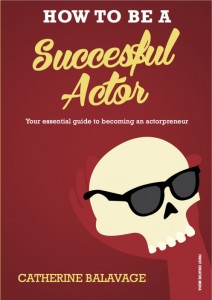 How To Be a Successful Actor: Becoming an Actorpreneur has been included in Amazon’s Kindle Countdown Deals and for one more day is only £1.99. How To Be a Successful Actor: Becoming an Actorpreneur, written by Frost Magazine’s editor Catherine Balavage, has received a number of good reviews including three five-star reviews on Amazon UK and another brilliant four-star review on Amazon US, even though it has only been out for two months. The below review is from acclaimed author Margaret Graham:
How To Be a Successful Actor: Becoming an Actorpreneur has been included in Amazon’s Kindle Countdown Deals and for one more day is only £1.99. How To Be a Successful Actor: Becoming an Actorpreneur, written by Frost Magazine’s editor Catherine Balavage, has received a number of good reviews including three five-star reviews on Amazon UK and another brilliant four-star review on Amazon US, even though it has only been out for two months. The below review is from acclaimed author Margaret Graham:

